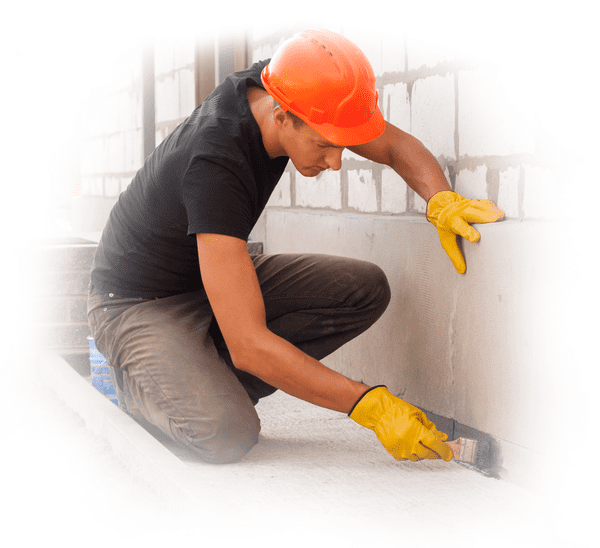To paraphrase Newton’s first law of motion, “an object at rest will stay at rest, unless it’s forced into motion.” What does that have to do with foundation repairs? It often describes a homeowner’s motivation to get repairs made.
Acculevel is a family-owned and operated company that specializes in foundation repair and waterproofing. Since our start in 1996, we’ve helped over 30,000 homeowners restore strength and stability to their greatest investment. We understand that you have a lot of responsibilities to meet, and only so much time in a day. But we also know that putting off home repairs can cost you more- and be more stressful- if you wait too long.
The Learning Center on our website is designed to be a resource for homeowners who want clear and honest details about home repairs. In this blog, we’re going to address some of the most pervasive myths about delaying repairs and the consequences of procrastination.
My Foundation Has Been This Way for Years
Technically, this one may be true. But this doesn’t mean you can ignore foundation damage for years. The Leaning Tower of Pisa is a marvel because it is an unlikely structure; it should have fallen down a long time ago. Chances are, your home is not going to be so lucky.
Your foundation was built to hold up a house. It is designed to withstand a tremendous amount of force from above, and to do so indefinitely. There are two problems with this philosophy, though: first, the ground below your home is not designed to stay in place and second, most foundation damage doesn’t come from above- it comes from the side.
Settling Makes Your Home Uneven
When your home was built, the construction crew tamped down the earth before they built the foundation. They did this to create a level and even surface, and if done correctly, it stays that way for years. But water, being a fluid, moves along any and every path it finds. This may include under or around your foundation, slowly eroding the dirt your home is resting upon.
As erosion happens, the foundation shifts. It’s not meant to move, and it’s certainly not flexible. Over time, the strain of trying to ‘hold fast’ against eroding soil will create cracks in the foundation. It will also cause problems for your house above the foundation, because drywall and wooden framework aren’t designed to bend, either. You can find additional symptoms that will help you identify settling in this blog.
Hydrostatic Pressure Weakens Your Foundation
Now to the second point: foundation damage often comes from the side. When it rains, your yard absorbs the water, right? But soil can only absorb so much water; the rest will end up pooling in low-lying areas- which may be next to your foundation.
The pressure of this saturated soil and excess water pushes against the side of your foundation. And since concrete is porous, the water can gradually seep into it, creating tiny fissures in the concrete. Over time, those become horizontal or zig-zag cracks. These cracks may or may not let water into your basement or crawl space; if they do, you need to install waterproofing (more on that later).
 This photo was taken by an Acculevel project advisor during a free estimate appointment. Both of these cracks are signs of hydrostatic pressure.
This photo was taken by an Acculevel project advisor during a free estimate appointment. Both of these cracks are signs of hydrostatic pressure.
Cracks like the ones you see in this picture are a warning that your foundation wall is weakening. It will begin to bow, or lean inward, as the pressure increases. If you leave it for too long, it will collapse. Now, it is possible that you’ve had a wall with a slight bow in it for months. Or maybe it has been years. But at some point, it will fail.
If one of your foundation walls collapses, your entire home will become unstable. There could be extensive damage to the rest of the home, all the way up to the attic. Repair costs for something like this will start around $20,000- and that’s just an estimate for rebuilding the foundation wall.
Repairing a cracked or bowing wall is far, far cheaper and safer.
All Old Houses Have Sagging Floors
This is something we hear all the time. And it’s true that most older homes have sagging floors. But that’s not because it’s “right,” or “good.” It happens because your flooring structure is made of wood, and wood eventually rots in damp crawl spaces.
Your floor won’t fall apart quickly or easily- there are multiple components involved, and they’re all connected. But as individual components become damaged and decay, your flooring will develop symptoms that indicate which parts (sill plate, joists, etc) are weakening.
 This photo was taken by an Acculevel project advisor during a free estimate appointment. Moisture has caused extensive damage: the insulation is wet and failing, support columns are leaning, and joists are rotting.
This photo was taken by an Acculevel project advisor during a free estimate appointment. Moisture has caused extensive damage: the insulation is wet and failing, support columns are leaning, and joists are rotting.
Like the photo above, there are many things that can go wrong in a crawl space. Once fiberglass insulation becomes damp, it holds moisture until there’s so much water in it that the weight of it pulls it down. Until it falls, it’s holding that moisture against your floor joists. Insects like termites prefer damp wood, so damp joists attract them. And biological growth like molds and fungus love a dark and damp environment.
It’s Supposed to Be a Wet Basement
This one, I have to say, is entirely false. Basements aren’t hot tubs, and the drain in the floor is only for emergencies. When your home was built, the basement probably wasn’t finished to be living space. Aside from installing your utilities, the builder left the basement as raw potential space.
But your entire home is meant to keep out the elements- from the shingles on the roof to the concrete on the basement floor. If you have water in your basement every time it rains, you have a foundation issue that needs to be addressed.
We discussed hydrostatic pressure earlier, how it forms, and how it creates foundation damage like cracks. Maybe water is getting in through a crack, or maybe it just saturates the walls (or floor) of your basement. But all of these occurrences come to the same conclusion: there is too much water in the soil around your foundation.
Basement waterproofing will capture the water, direct it to a sump pump, and expel it out of your home through a discharge line. This keeps the water in check whenever it gets into your basement- and it will help relieve the hydrostatic pressure causing the issue.
The Next Step
Your home is your greatest investment and your most valuable financial asset. If you have any of the issues we’ve covered in this article, or have found other worrying signs of foundation trouble, you should have them assessed by a professional.
You can find a reputable local contractor through friends, neighbors, or by using other local resources. We strongly recommend that you verify companies through the Better Business Bureau. Please also take advantage of our free guide to our questions to ask a contractor; it comes with a free downloadable printout that you can use when meeting with any home repair company.
If you live in Indiana or the surrounding areas, schedule an appointment with Acculevel. We have an A+ rating with the BBB, and 4.7 stars with both Google and Home Advisor (Angi). When you schedule an appointment with one of our friendly and knowledgeable project advisors, they will meet with you on-time, discuss your concerns, and evaluate your home to provide you with the best whole-home solution available.



















